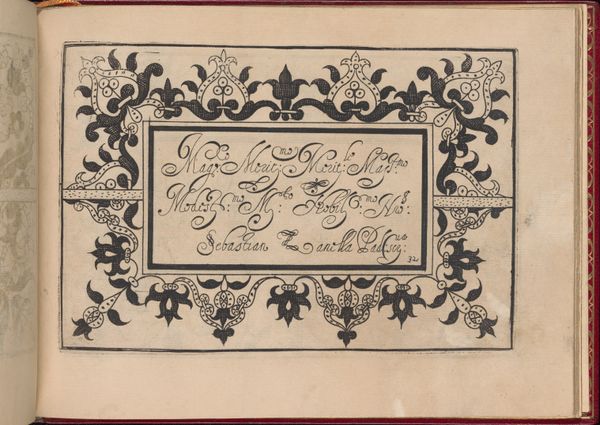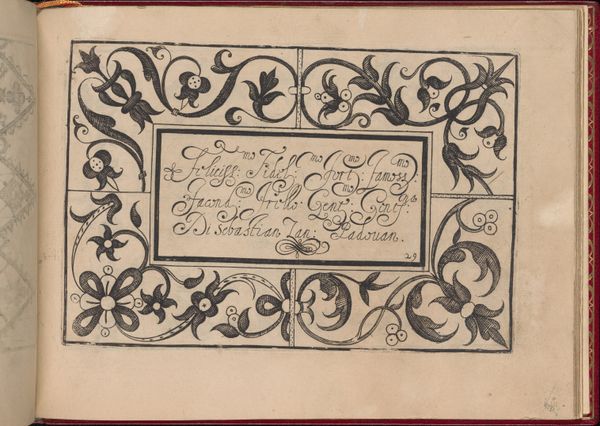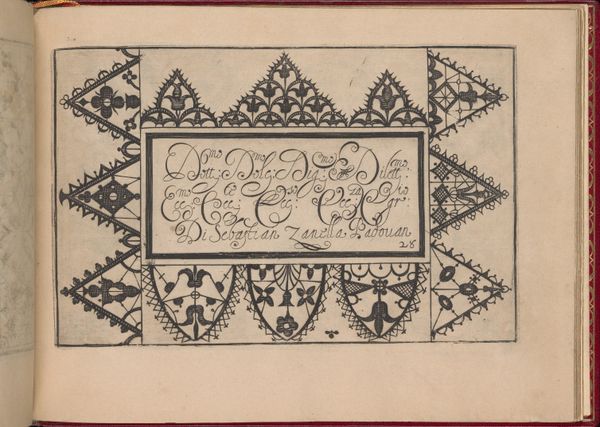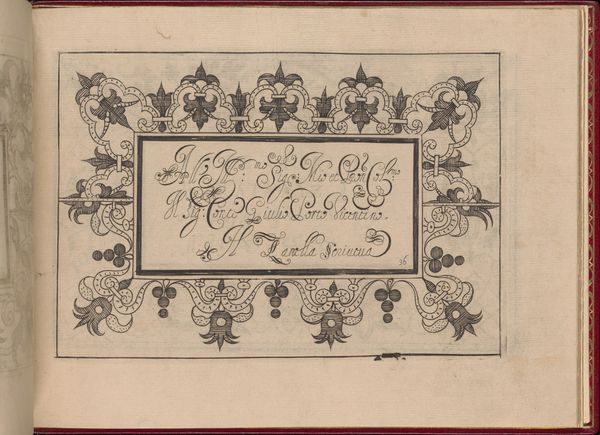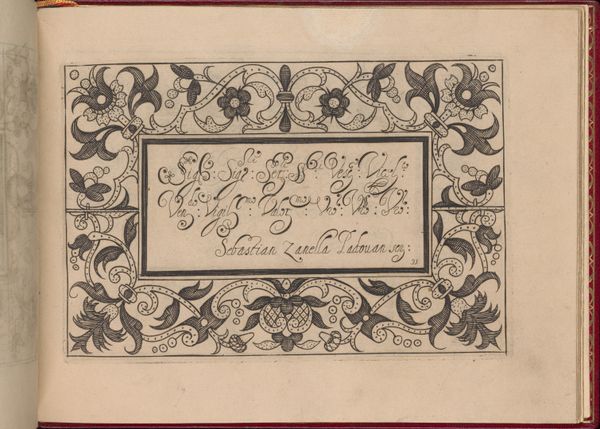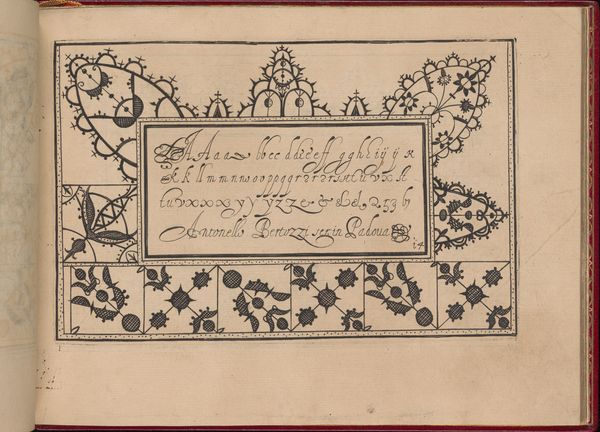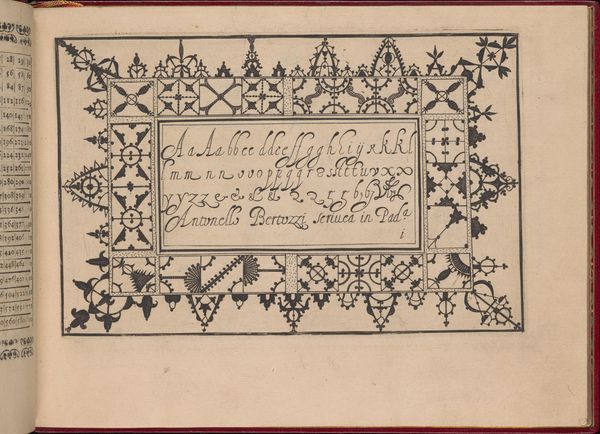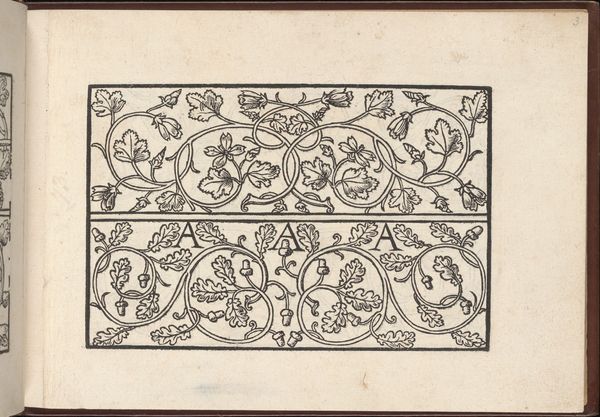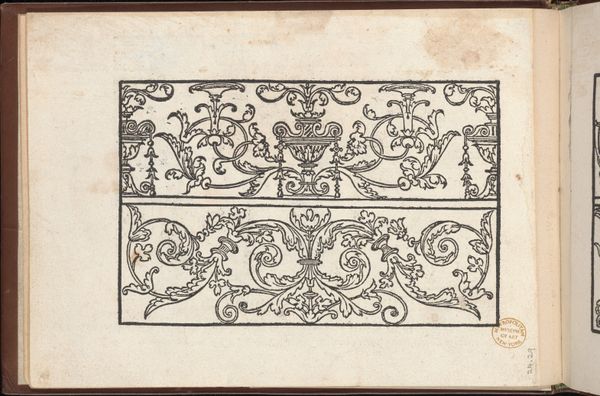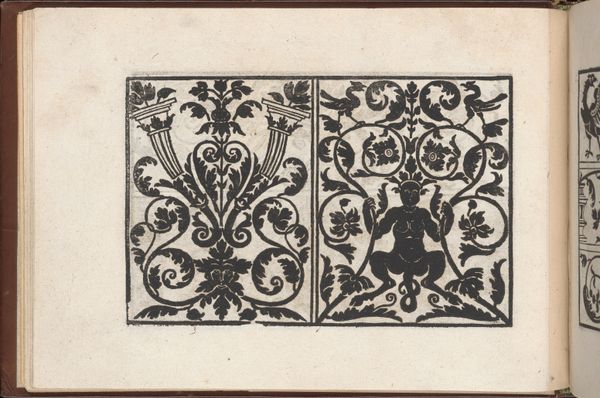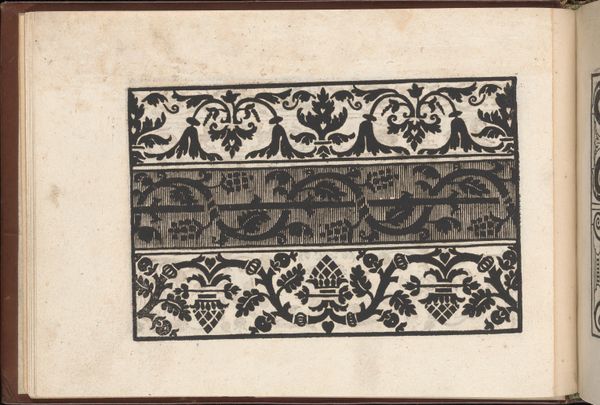
Ghirlanda: Di sei vaghi fiori scielti da piu famosi Giardini d'Italia, page 38 (recto) 1604
0:00
0:00
drawing, graphic-art, print
#
drawing
#
graphic-art
# print
#
geometric
#
line
#
history-painting
#
decorative-art
#
italian-renaissance
#
calligraphy
Dimensions: Overall: 5 7/8 x 7 7/8 in. (15 x 20 cm)
Copyright: Public Domain
Curator: Today, we are looking at page 38 from "Ghirlanda: Di sei vaghi fiori scielti da piu famosi Giardini d'Italia," created in 1604 by Pietro Paulo Tozzi. This work is currently housed in the Metropolitan Museum of Art. It is a beautiful example of graphic art featuring a meticulously crafted floral border surrounding elegant calligraphy. Editor: My initial impression is one of formal restraint and refinement. The contrasting dark lines create such sharp clarity on the light paper—it's balanced by those intricate patterns. Curator: The context surrounding this work is fascinating. "Ghirlanda" translates to Garland, suggesting an ornamental collection of flowers. During the Italian Renaissance, there was increased botanical study, and the popularity of emblem books was surging, offering symbolism through image and text. Works like these became powerful displays of humanist intellectualism. Editor: Yes, and the interplay between image and text directs our attention. The text sits perfectly framed, becoming an integral part of the composition. I’m struck by how those black floral motifs serve both a decorative and structural role, anchoring the text within the space. Curator: It certainly showcases the period's interest in blending artistic expression with social function. These ornamental prints and books served multiple purposes from announcing lineage to communicating ideas. And for scions such as Tozzi and engravers such as Sebastian Zanella, such works became markers of professional aptitude. Editor: It truly demonstrates how much one can convey using minimalist elements and a very limited tonal range. Look at the details within those geometric, almost architectural, renderings of each bloom and stem—they all carry subtle, controlled variations in linework and hatching to produce areas of lightness or contrast. Curator: These prints were circulated among educated elites and acted as symbolic currency, enhancing the reputation of both the patron commissioning it and, by extension, the families associated with them. Editor: Studying Tozzi’s elegant designs teaches me the importance of not only skill but also careful formal resolution in artmaking. The final print seems simultaneously spare and intricately dense. Curator: Absolutely, seeing works like this highlights the intertwined connections between social status, humanist intellectualism, and early graphic design—showing how these images reflected societal values and the professional aspirations of artists in their time. Editor: A fitting piece to end on— demonstrating art's lasting dialogue across mediums and history.
Comments
No comments
Be the first to comment and join the conversation on the ultimate creative platform.
